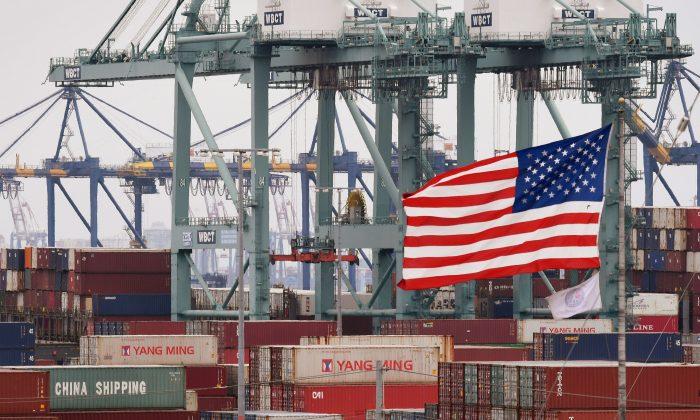The terms of a phase one trade deal between the United States and China would keep some tariffs at their current level and roll some back—but a coalition of more than 260 U.S. manufacturers have called for an increase to 25 percent on all Chinese imports.
The two countries announced a preliminary agreement and revealed some of its details on Dec. 13. As they work to finalize the deal, the Coalition for Prosperous America (CPA) is urging President Donald Trump to include higher tariffs.
CPA, a nonprofit coalition of agricultural, manufacturing, and labor members, gathered hundreds of signatory companies for an open letter to the White House, published Dec. 9, that cited research showing great economic gains if tariffs are raised.
“If China were subjected to a 25 percent across-the-board tariff, GDP would increase by $125 billion over five years, with 721,000 new jobs created,” it stated.
Currently, there are 25 percent tariffs on some imports from China—roughly $250 billion worth of imports—including machinery and electronics. Those are to remain at the current level, according to the phase one agreement.
In September, Trump raised tariffs on about two thirds of consumer goods from China (worth about $120 billion), from 10 to 15 percent. The phase one agreement would decrease them to 7.5 percent.
Opponents of high tariffs have argued that they dramatically raise prices for consumers. Ahead of the September hike, J.P. Morgan estimated, in a note to investors that has circulated widely in the media, that this hike would cost the average U.S. household $1,000 a year.
But the CPA study projects a boost to the U.S. economy over the next four years.
It predicts that the price of consumer goods will not rise dramatically in the long term. “Some production would be reshored to the U.S. while other production would move to lower-cost third countries, dampening or eliminating import price increases,” the CPA stated in a press release for the study.
It estimated the growth in production brought back to the United States would start out small, under $1 billion in 2020. But it would accelerate rapidly to reach $69 billion in 2024.
Jeff Ferry, chief economist for the CPA, told The Epoch Times, “For 30 years, China has built up its economy at the expense of U.S. industry. We have done nothing about it because of [a] silly mistaken belief.”
That belief is that opening up U.S.–China trade widely would benefit both countries, opening China’s market to the United States as well as vice versa.
In 2000, when then-President Bill Clinton urged the U.S. Congress to support China in joining the World Trade Organization (WTO), he said “[U.S. companies] will be able to sell and distribute products in China made by workers here in America without being forced to relocate manufacturing to China, sell through the Chinese government, or transfer valuable technology—for the first time. We’ll be able to export products without exporting jobs.”
That turned out not to be the case, according to MIT Sloan economist David Autor. “We would conservatively estimate that more than a million manufacturing jobs in the U.S. were directly eliminated between 2000 and 2007 as a result of China’s accelerating trade penetration in the United States ... following China’s ascension to the WTO,” he said in a 2017 interview with Freakonomics Radio.
Autor was skeptical that manufacturing jobs would return to the United States even if production were to return, because of increased automation. He called the impacts of China joining the WTO “traumatic” to the United States.
The Dec. 9 manufacturers’ open letter stated, “America’s industrial base has been hobbled for over 20 years because our nation’s leaders have failed to confront China’s predatory trade practices.” All signatories expressed their appreciation to Trump for “making trade enforcement such a high priority.”
CPA’s CEO Michael Stumo stated in a press release on Dec. 13 that “China’s behavior remains unacceptable, and only a permanent, across-the-board tariff will make a dent in Beijing’s predatory behavior.”





